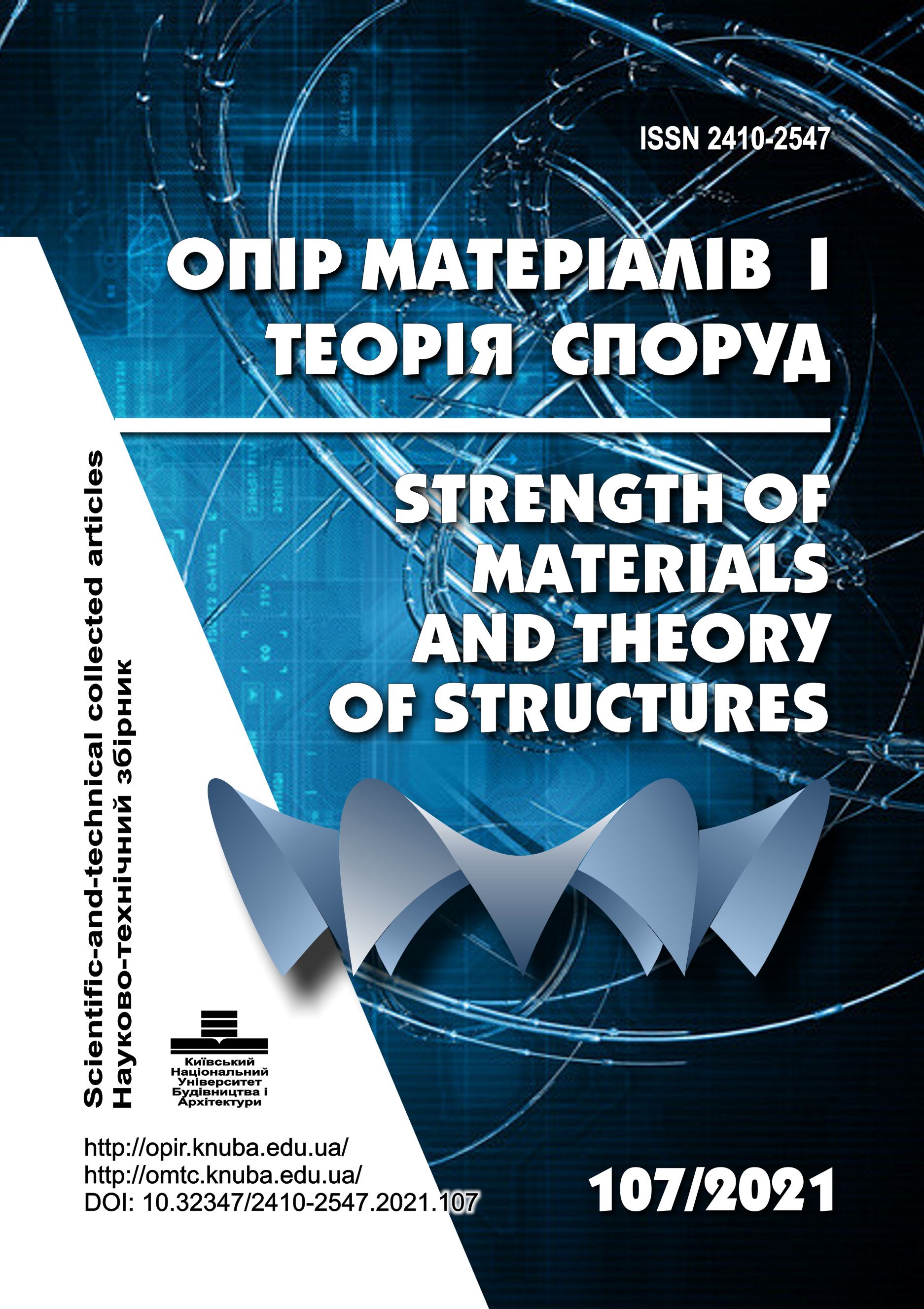Difference schemes for dynamics problems
DOI:
https://doi.org/10.32347/2410-2547.2021.107.133-139Keywords:
difference scheme, stability of difference scheme, modified central difference method, Newmark's methodAbstract
To solve dynamics problems in the LIRA 10.12 software package, the difference scheme is used, known as modified central difference method. The goal of dynamic problems solving is to get a good approximation of actual dynamic response of a given structure. It's a matter of convergence conditions of the difference scheme used in numerical integration of motion equations.
The solution of the linear dynamic problem for all possible displacements satisfies the equations
,
, , – symmetric positive-definite bilinear functionals of possible work of the internal and inertial forces and motion resistance forces, they correspond to stiffness matrices, mass and damping matrices, – linear functional of possible work of the external forces.
After approximation in spatial variables (usually the finite element method is applied) we obtain the system of ordinary differential equations
,
, , – stiffness matrices, mass and damping matrices, – external forces.
Difference scheme of modified central difference method we obtain by replacing the values of functions and derivatives with corresponding difference relations. Difference relations, which are applied in modified central difference method, approximate accelerations , velocities and displacements with an error proportional to the square of the time step.
Approximation and stability are the convergence conditions of the difference scheme. To study the stability of difference schemes, we assume that and apply the obvious equations
,
.
Let us denote , apply the Cauchy inequality on the right-hand side and integrate the resulting inequality. Then
,
where are positive constants. The boundedness follows from the Gronwall's lemma. In addition to the continual version of study of the difference schemes stability, the discrete version is also considered.
Unconditional practical efficiency of the modified central difference method and the simplicity of its underlying principles allow it to be successfully applied to a wide range of dynamic problems.
References
Glowinski R., Lions J.-L., Tremolieres R. Chislennoye issledovaniye variatsionnykh neravenstv (Numerical study of variational inequalities). – M.: Mir, 1979. – 574 s.
Newmark N.M. A method of computation for structural dynamics. – A.S.C.E. Journal of engineering, mechanics division. – Vol. 85, 1959, pp. 67 – 94.
Maghdid D. Stability and accuracy of Newmark’s method. – Master thesis, Lund University, 2016.
Marchuk G.I., Agoshkov V.I. Vvedeniye v proyektsionno-setochnyye metody (Introduction to projection-grid methods). – M.: Nauka, 1981. – 416 s.
Andronov A.A., Vitt A.A., Khaykin S.E. Teoriya kolebaniy (Oscillation theory). – M.: Nauka, 1981, – 568 s.
Duvaut G., Lions J.-L. Neravenstva v mekhanike i fizike (Inequalities in mechanics and physics). – M.: Nauka, 1980. – 383 s.
Ladyzhenskaya O.A. Krayevyye zadachi matematicheskoy fiziki (Boundary value problems of mathematical physics). –- M.: Nauka, 1969. – 407 s.
Tremolieres R. Inequations variationelles: existence, approximation, resolution. These, Universite de Paris. 1972.
Downloads
Published
Issue
Section
License
Copyright (c) 2022 Ісаак Євзеров, Юрій Гераймович, Дмитро Марченко, Владислав Ремньов

This work is licensed under a Creative Commons Attribution 4.0 International License.
Authors retain copyright and grant the journal right of first publication with the work simultaneously licensed under a Creative Commons Attribution License that allows others to share the work with an acknowledgement of the work's authorship and initial publication in this journal.

